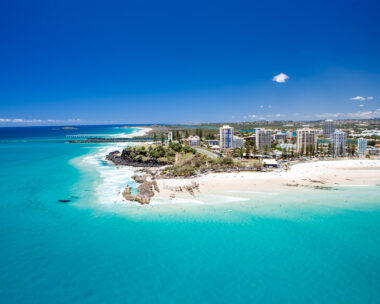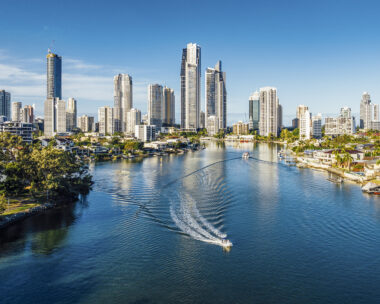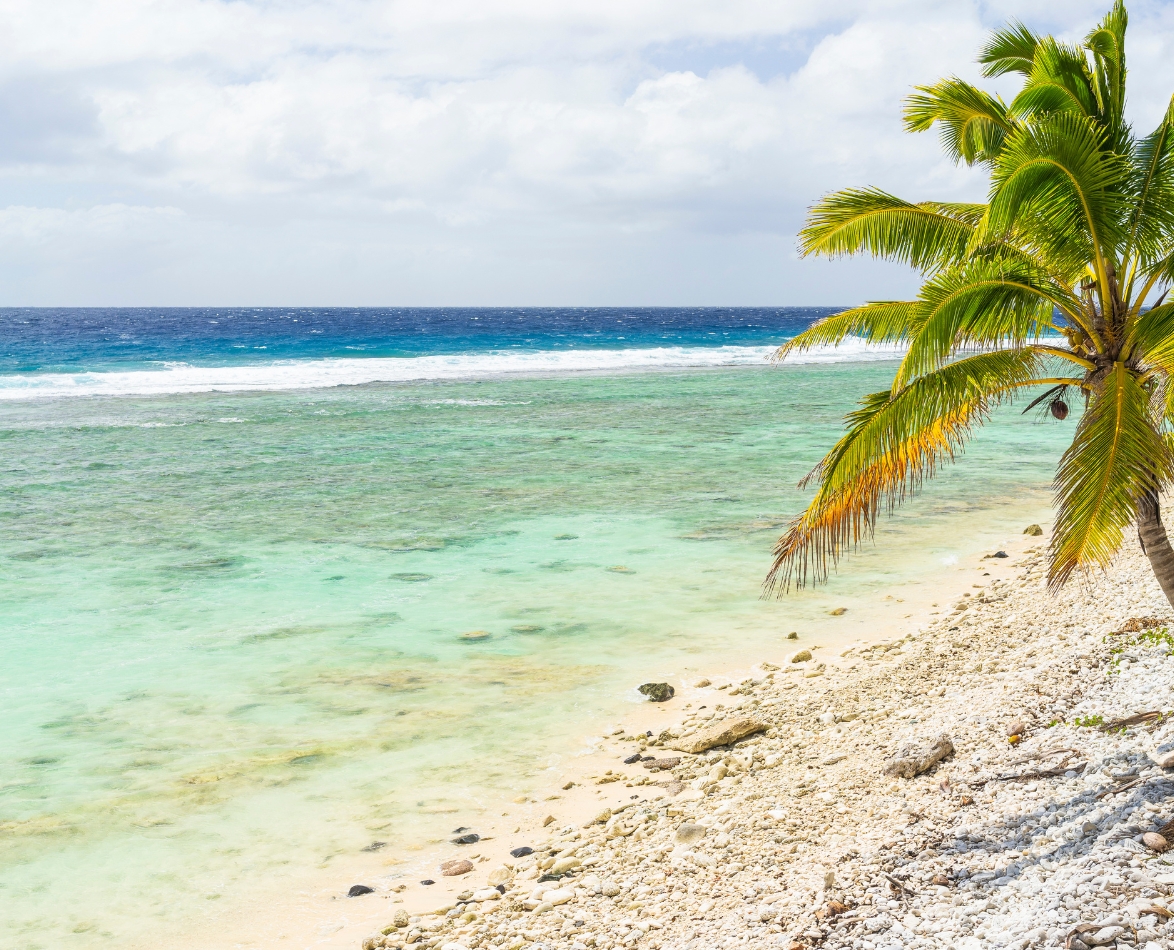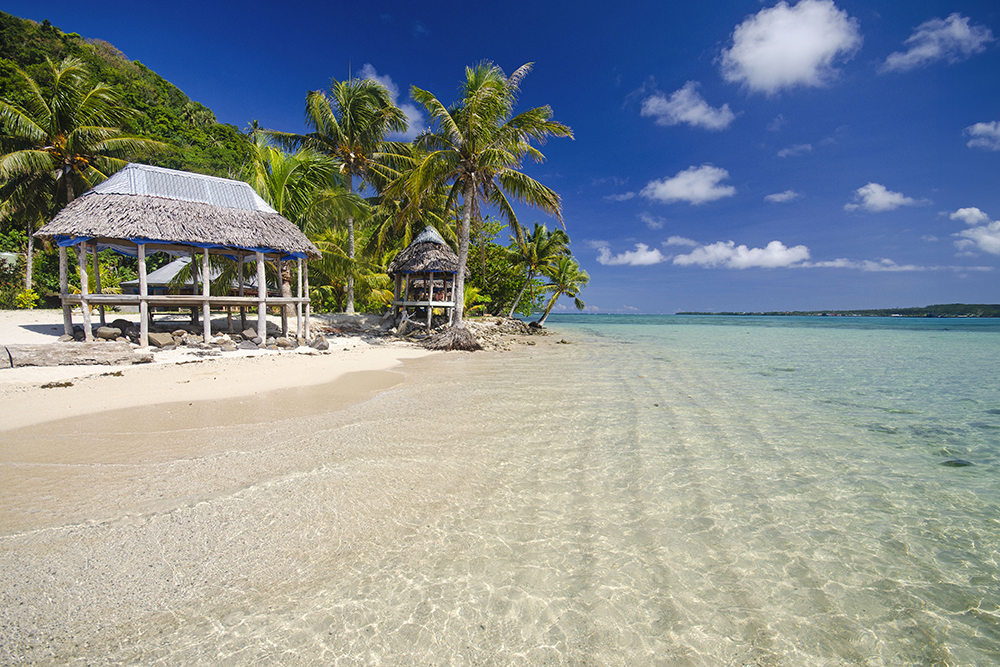I’d like to say that I got the idea of swimming with dolphins from Cilla on Coronation Street, who decided it was the one thing she wanted to do before she died. But I didn’t. It just seemed like a great thing to do with my nine-year-old daughter Pearl during such a gift of a summer.
Pearl had recently demonstrated an ability to spend all day in the water diving and doing double flips and handstands while snorkelling, and these skills, I decided, would well suit a swim with some dolphins. The night before, we tried to visualise what lay ahead. “What will the boat be like?” Pearl wanted to know, hoping it wouldn’t be too rocky, as it had been once when we were whale watching in Kaikoura. Pearl was okay, but she’s never forgotten the horror that was vomiting tourists. I was pleased to inform her that Tauranga’s Dolphin Seafaris’ boat is a catamaran – renowned for stability at sea.
oy big question was, how exactly do you swim with dolphins? Do you just jump in and let them swim around? Would they touch you, or just look at you with those cute dolphin eyes? The next day I discovered that to be a truly successful swimmer with dolphins is to be confident and fun-loving, and possess the ability to hum a tune through your snorkel while diving down deep and doing oan from Atlantis-style dolphin kicks. The crew informed us that dolphins, like dogs and horses, can sense if you are happy and relaxed. If you sit in the water seething with resentment and negative energy, they’ll just swim away – which did make me wonder how Coro Street‘s Cilla would get on. And to be honest, I wasn’t sure how I would get on.
For me, like most people who grew up in the 1970s, oan from Atlantis kicks weren’t a problem – it was being relaxed in deep sea surrounded by mammals weighing up to 90kg that worried me. And whether we would actually see any dolphins. There are no guarantees with ecotourism operators like Dolphin Seafaris, because the dolphins call the shots. If they turn up, great. But if they have an appointment elsewhere in the ocean, too bad. And most of us would applaud that attitude, having seen sad captive dolphins in marine parks.
Dolphin Seafaris have a 98% hit rate for finding dolphins in the beautiful waters off ot oaunganui. For the past eight years they have kept data showing them where the hot spots are. They also offer an 85% chance of swimming with them. As we headed out of busy Tauranga Harbour, Pearl eagerly consumed the muffins on offer and I eagerly absorbed the information from the skipper.
All the crew are marine studies graduates, and as we cruised out towards oayor Island, we learned about flying fish, gannets, underwater volcanoes and what to expect when we eventually saw the dolphins. Then we were upon them and the crew clapped and whistled, which apparently the dolphins appreciate as they leap out of the water.
Pearl positioned herself on a seat at the bow of the boat where she could be extraordinarily close to the dolphins – one even brushed her foot. Ecstatic would be a good way to describe her at that moment. We saw two pods of common dolphins on our journey that day and both had babies with them, which meant they were nursing pods. I had never seen new dolphin mothers before and soon learned that the babies are breastfed, and that the pods have midwives who help the mother give birth, then take the baby to the surface to breathe.
I also discovered that pods are led by females, while the males take on a more protective role. Because of the babies’ presence, there would be no swimming that day, and fair enough. The conditions of the Department of Conservation oarine oammal Permit dictate that babies are left alone, mainly because we humans may interrupt breastfeeding – and there’s also a risk in encouraging the babies to become too used to human company.
If we had swum that day we would have been offered two ways of doing it. They can gently lower people in with the pod, in groups of six to eight, for 10 to 15-minute intervals, while the boat drifts. This is when the humming and diving comes in. The boat also has a metal handbar, which they tow in the wake and people can hang on at slow speed, looking down to see the dolphins swimming underneath them.
As we headed back I spoke to a woman who was on the boat for her second swim, because she felt she’d been a bit nervous to enjoy her first experience properly. Pearl was a little disappointed about the lack of swimming, having practised all her flips and dives, but we had spent five hours at sea on a beautiful calm summer’s day and finished up dolphin experts. I also like to think Pearl got a valuable lesson in respecting the ocean.
A quick glance at the visitor’s book confirmed that Coro Street‘s Cilla was not alone in her last wish because everyone, it seems, recommends swimming with dolphins before you die. We’ll be back.
**Factfile
**The dolphin tour Dolphin Seafaris depart daily from Tauranga Bridge oarina and Salisbury Wharf, ot oaunganui. Wetsuits, flippers, masks and snorkels are provided. Trips cost $120 per adult and $90 for children over five. on the rare occasions customers don’t see dolphins or whales they receive a 50% discount on another trip taken within three months. Children under five cannot swim, and those aged under 12 must be accompanied by an adult.For more info, phone 0800 LoVE BoP (568 3267), visit www.bayofplentynz.com or www.nzdolphin.com. The region To plan a Kiwi holiday and book domestic accommodation, visit www.aatravel.co.nz
- Wendyl Nissen





